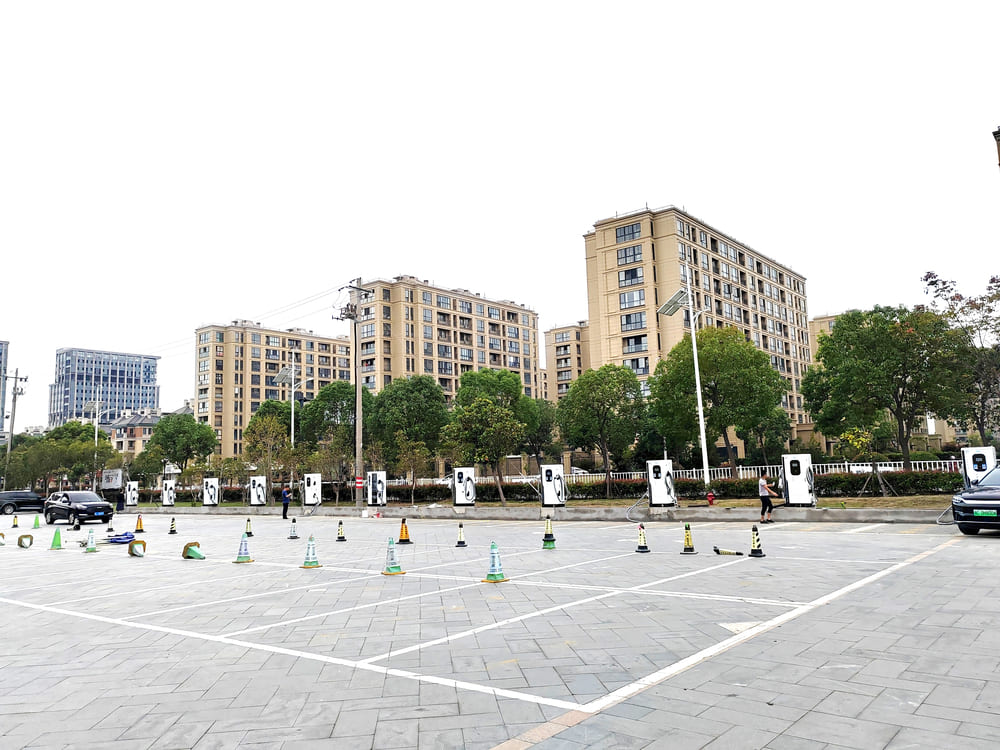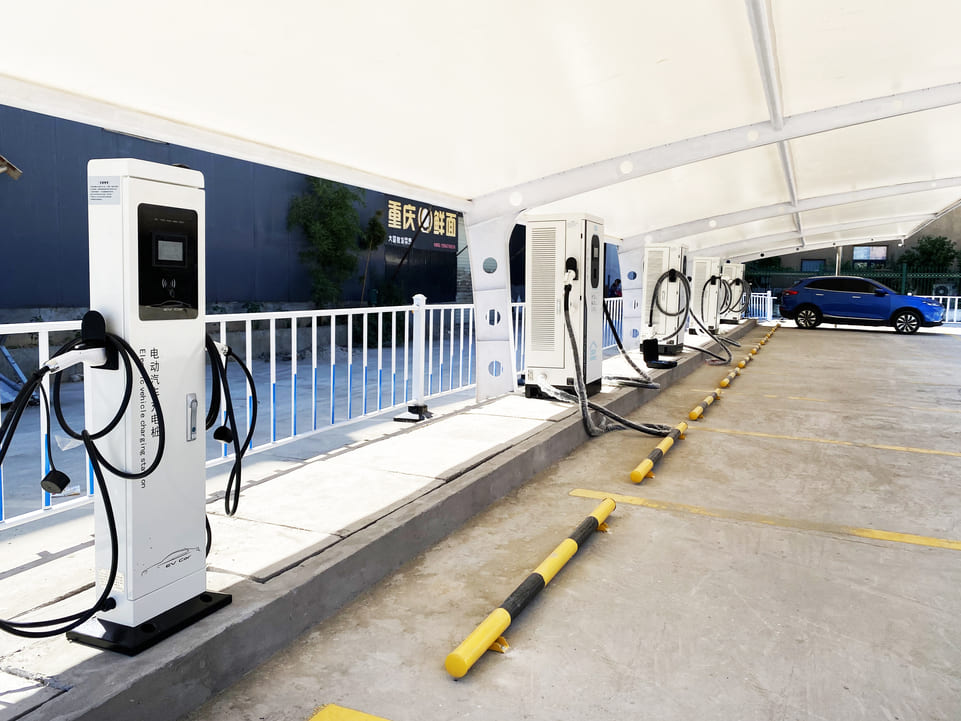Based on their function, cars can be categorized into oil, hybrid, and electric vehicles. And if you have a trolley or plug-in hybrid, you need to keep an eye on your car’s power to avoid staying on the road because of the car’s death.
Today’s focus is on the three ways to charge your car and tell the differences between each.
Charing Your Car at Your Home
Charging an electric vehicle at home is a convenient and increasingly popular way. It allows owners to charge their vehicles without having to leave their homes. There are two ways to charge at home: Level 1 Charging and Level 2 Charging.
When you purchase an electric vehicle, the manufacturer provides a charging cord ( (Level 1 Charging) that plugs directly into a regular household outlet. Level 1 charging uses 110-120 volts of household power and is ideal for charging at night or for longer periods. Although the charging speed is slower, it is sufficient for everyday use and minimizes costs.
Home charging offers great convenience, and even though it can take up to ten hours to fully charge using such a charger, owners can charge at night while resting without having to search for an external charging station.
Next is Level 2 Charging, if you are looking for faster charging, consider installing a Level 2 charging station. These charging stations usually require 220-240 volt power and can generally be fully charged within a few hours, speeding up your charging significantly.
However, installing a Level 2 charging station usually requires the purchase of a specialized charger and some electrical system upgrades. You may need to hire a professional electrician to install it and ensure it meets safety standards.
The other thing about the range on a full charge is that the distance you can travel on a full charge depends on the model of the vehicle and the battery capacity. An average electric car can travel 100 to 300 miles (about 160 to 480 kilometers) on a full charge. Higher-end models, such as the Tesla Model S, may travel more than 370 miles (about 600 kilometers) on full charge.
Charing the Car in Public

Charging a car in a public place is more time-consuming. There are also two types of EV charging stations recommended: the Level 2 Charging Stations and DC Fast Chargers.
Level 2 charging stations are not only for homes but also for shopping malls or office locations where people spend more time. These chargers supply 220-240 volts of power and charge faster than a standard home outlet, but usually takes a few hours to fully charge the battery.
Highway service areas or fast food restaurants may prefer to install DC Fast Chargers to quickly charge drivers on the go. It uses 400 volts to over 1,000 volts DC and can range from 50 kW to 350 kW. It is one of the fastest charging methods available, and can typically charge an EV to 80% in less than 30 minutes.
Level 2 charging stations and DC fast charging stations are equipped with several types of charging plugs, mainly Type 1, Type 2 (more common in Europe), CCS (Combined Charging System), CHAdeMO (mainly used for certain Japanese brands of vehicles), and special ports for Tesla. There are also charging stations built specifically for Tesla charging, and Tesla’s Superchargers are also DC fast charging, but are designed primarily for Tesla vehicles and use Tesla’s unique charging ports.
The basic steps for charging a trolley at a Level 2 charging station and a DC Fast Charger are roughly the same, so I’ll briefly describe them:
1. Prepare for charging: Drive to the charging station and park your vehicle near the charging post, you want to make sure that the plug type of the charging station is compatible with your vehicle then proceed to the next step of charging.
2. Connect the charger: Open the charging port cover of your EV and connect the charging plug of the charging station to the charging port of your vehicle.
3. Initiate Charging: Follow the instructions on the charging station. This may include authentication and payment using a mobile app, RFID card, loyalty card, or credit card. To confirm charging has begun, many charging stations and vehicles will have indicator lights or screen displays to confirm charging status.
4. Monitor the charging process: During the charging process, you can monitor the progress of the charge, and some vehicles and charging stations provide apps to display detailed charging data.
5. End Charging: Once the battery is fully charged or has reached the desired level of charge, stop charging according to the instructions from the charging station. Disconnect the charging plug, starting with the vehicle end first, then the charging station end, making sure the plug is placed back into the charging station’s holder.
6. Safety check: Make sure the charging port cover is closed. Then check that the charging equipment is back in place and that there are no items or obstacles left around the vehicle. Once you are sure there are no errors, you can drive away from the vehicle.
Charing Your Car with Another Car
The two charging steps above are based on the premise that there is a charging source available when you go into the mountains or countryside away from a power source. Then how do you charge your soon-to-be-depleted tram? The answer is to charge it through someone else’s car.
Again, this method only applies to traditional internal combustion engine vehicles, not to pure electric vehicles, which require special charging equipment to charge. Also, this practice can damage the life of your car, so the following is only an extension of knowledge and reference.
Charging your car using another vehicle usually refers to vehicles starting using jumper cables and applying to petrol or diesel vehicles when the battery is depleted. Below are the steps for charging (actually jump-starting) a conventional (non-electric) vehicle using jumper cables:
1. Preparation: Ensure that both vehicles are using lead-acid batteries on a 12-volt system. Check that the jumper cables are not damaged and that the clamps are in good condition.
2. Connect the jumper cables: Turn off the engines of both vehicles, make sure both vehicles are turned off, and remove the key.
3. Connect the positive terminal: Open the engine cover and connect the red clip on one end to the positive (+) terminal of the battery of the vehicle to be started and the red clip on the other end to the positive (+) terminal of the battery of the vehicle to be started.
4. Connect the negative terminal: Connect the black clip on one end to the negative (-) terminal of the battery of the vehicle to be started, and the black clip on the other end to the engine or metal part of the body of the vehicle to be started; do not connect to the negative (-) terminal of the battery to prevent sparks from causing an explosion.
5. To start your vehicle’s engine: Start the vehicle providing power first and let it run for a few minutes. After ensuring that the power supply vehicle starts, attempt to start the depleted vehicle. If the vehicle fails to start, it may be necessary to wait a few minutes and try again.
6. Remove Jumper Cables: Once the vehicle is started successfully, remove the jumper cables in reverse order: black clips first, then red clips. Take care to avoid letting the clips touch any metal surfaces or each other.
Precautionary Note
- Ensure that the clamps of the jumper cable do not come into contact with any non-designated metal surface during operation to prevent accidental current or sparks.
- If the vehicle to be started is electric or a modern vehicle with a special electrical system, refer to the vehicle manual or seek professional help to avoid damage to the electronic equipment.
Some Charing Tips You Need to Know

During the charging process, there are some precautions to be explained to ensure the safety of the car and you in your charging routine. It is written below:
1. Inspect the charging equipment regularly: check the charging cable and plug for damaged, frayed, or exposed wires. Damaged equipment can cause electrical malfunctions and even fires.
2. Avoid water sources: Ensure that the charging area is away from water sources such as car wash bays or garden hoses. The combination of water and electricity may cause electric shocks or short circuits.
3. Maintain Battery Health: Avoid charging your EV battery to 100% or discharging it to 0% for long periods of time, as this will prolong battery life. Many EVs have pre-programmed battery management systems that set the ideal charging range.
4. Environmental factors: Take special care when charging in extreme temperature conditions; both cold and extremely hot weather can affect charging efficiency and battery performance.
5. Monitoring the charging process: When rapid charging, the charging process and battery temperature should be closely monitored to avoid overheating of the battery.
6. Charging schedule: Home charging should be done at night when the load on the grid is lower and the cost of electricity is cheaper in many areas. And DC fast charging also needs to pay attention to the time, because DC charging has a greater burden on the battery, and it is recommended to use it only when you need to quickly replenish the power, rather than as a daily charging method.
Finally, reasonable charging should be based on your specific usage and the technical specifications of your EV. Ideally, the charging schedule should be adjusted based on daily driving needs as well as the health of the battery. With smart charge management and following best practices, you can maximize the performance and longevity of your EV’s battery.
Still haven’t found a charging partner you can trust? We are, we sell all kinds of charging piles and circuit switches, and we have been leading this industry for more than a decade, you can browse our official website Moreday to get more information about our products, and come and get a quote, we are online 24 hours a day to answer your questions.

